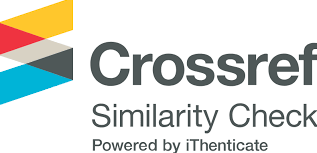Research on development of Distichochlamys citrea gene resource on hilly-mountainous areas Hanoi city
Keywords:
Distichochlamys citrea, biological characteristics, genetic relation, chemical component of essential oil, hilly-mountainous areas of Hanoi cityAbstract
Distichochlamys citrea is a precious medicinal plant, discovered in 1995 at Bach
Ma National Park. Results of assessment on sizes of 38 biological plant parts of
Distichochlamys citrea planted 1 year on hilly-mountainous area of Ba Trai
commune, Ba Vi district, Hanoi city show that there are similar features compared
with Distichochlamys citrea planted in original Bach Ma National Park. Research on
genetic relation of genus Distichochlamys was conducted through sequencing of Matk
gene fragment and part of ITS gene of 15 samples of Black Ginger from 3 distribution
regions, 11 samples in Bach Ma National Park, A Luoi district) belonging to
Distichochlamys citrea species were identified, 4 samples of Vu Quang National Park
belonging to the genus Distichochlamys also were recorded. Suitable techniques of
Distichochlamys citrea is to plant in spring, density 6 plants/m
2
, direct light shading
ratio 75%, fertilizer dosage [0.6 kg Farmyard manure + 20 mg/lB1 + 20 mg/l
humic]/plant or [0.45 kg farmyard manure + 2 g NPKhh ratio (13N: 21K
2O5
:13P2O5)].
30 components of essential oil were identified, the main components are 1.8 - Cineole
(17.37%), Trans-Geraniol (27.89%), citral group (9.51%), Pinene group (8.18%),
Geranyl acetate (9.82%), β-Myrcene (2.06%), α-Terpinene (2.27%), Linalool (2.29%),
β-Sesquiphellandrene (3.91%), endo-Borneol (2.32%), Terpinene-4 - ol (3.94%) and a
number of components of low content with more than 90% oil weigh and can be
applied in pharmaceuticals, cosmetics, fragrances.
References
1. Nguyễn Quốc Bình, 2005. Họ Gừng (Zingiberaceae Lindl). Danh mục các loài thực vật Việt Nam. NXB Nông nghiệp, Hà Nội, tập 3: 487 - 508.
2. Lê Khả Tường, 2016. Kỹ thuật canh tác cây Nghệ vàng tại một số vùng trọng điểm phía Bắc. NXB Nông nghiệp, Hà Nội 2016.
3. Phạm Việt Tý, Nguyễn Thị Hoài, Nguyễn Viết Khẩn, Hồ Việt Đức, 2014. Bước đầu nghiên cứu thành phần hóa học của tinh dầu Gừng đen (Distichochlamys citrea) thu hái tại A Lưới - Thừa Thiên Huế, Tạp chí Y Dược học, Trường Đại học Y Dược, Đại học Huế, Số đặc biệt, tr. 43 - 48.
4. Bahare S., Shachi U., Ilkay E. O., 2019. Therapeutic Potential of α- and β-Pinene: A Miracle Gift of Nature, Biomolecules, 9(11): 738.
5. Başer K. H. C., Buchbauer G., 2010. Handbook of essential oils: science, technology, and applications, CRC Press Taylor & Francis Group, pp. 213 - 214.
6. Bingtao Z., Xinbing S., 2019. Molecular targets of β-elemene, a herbal extract used in traditional Chinese medicine, and its potential role in cancer therapy: A review, Biomedicine & Pharmacotherapy.
7. Carnesecchia S., Bras-Goonc R., Bradaiac A., 2004. Geraned a component of plant essential oils, modulates DNA synthesis and potentiales 5 - fluorouracil efficacy on human colon tumor xenografts, Cancer Lett, 215. 53 - 59.
8. Ciftci, O., Oztanir, MN và Cetin, A., 2014. Neuroprotective effects of β-myrcene following global cerebral ischemia/reperfusion-mediated oxidative and neuronal damage in a C57BL/J6 mouse. Neurochem. Res. 39(9), 1717 - 1723.
9. Denyer C. V., Jackson P., Loakes D. M., Ellis M. R., Young D. A., 1994. Isolation of antirhinoviral sesquiterpenes from ginger (Zingiber officinale), J Nat Prod, 57(5), pp. 658 - 662.
10. Eggersdorfer. M., 2000. Terpenes. Ullmann's Encyclopedia of Industrial Chemistry. Weinheim: Wiley-VCH. doi:10.1002/14356007.a26_205.
11. Irina P., Paticia S., Ana C. S., Silva A. M., Eliana B. S., 2018. Linalool bioactive properties and potential applicability in drug delivery systems, Colloids and Surfaces B: Biointerfaces 171 (1): 566 - 578.
12. Joglekar M. M., Panaskar S. N., Arvindekar A. U, 2014. Inhibition of advanced glycation end product formation by cymene-A common food constituent. J. Funct. Foods 2014, 6, 107 - 115.
13. Kress WJ, Prince LM, Williams KJ, 2002. The phylogeny and a new classifcation of the gingers (Zingiberaceae): evidence from molecular data. American Journal of Botany 89(10): 1682 - 1696.
14. Mahesh C., Om P., Ravendra K., Rakesh K. B., Brij B., Mahesh K. and Anil K.P., 2017. β-Selinene-Rich Essential Oils from the Parts of Callicarpa macrophylla and their Antioxidant and Pharmacological Activities . Medicines, 4, 52.
15. Martins H. B., Selis N., 2017. Anti-Inflammatory Activity of the Essential Oil Citral in Experimental Infection with Staphylococcus aureus in a Model Air Pouch, Evidence-Based Complementary and Alternative Medicine.
16. Moteki H., Hibasami H., Yamada Y., Katsuzaki H., Imai K., Komiya T., 2002. Specific induction of apoptosis by 1,8 - cineole in two human leukemia cell lines, but not a in human stomach cancer cell line, Oncol Rep, 9: 757 - 760
17. Newman M.F., 1995. Distichochlamys, a new genus from Vietnam. Edinburgh Journal of Botany 52: 65 - 69. 1995.
18. Ngamriabsakul C, Newman MF, Cronk QCB, 2004. The phylogeny of tribe Zingibereae (Zingiberaceae) based on ITS (nrDNA) and trnL-F (cpDNA) sequences. Edinburgh Journal of Botany 60(3): 483 - 507.
19. Saad S. Dahham, Yasser M. Tabana, Muhammad A. Iqbal, Mohamed B. K. Ahamed, Mohammed O. Ezzat, Aman S. A. Majid, and Amin M. S. A. Majid, 2015. The Anticancer, Antioxidant and Antimicrobial Properties of the Sesquiterpene β-Caryophyllene from the Essential Oil of Aquilaria crassna, 20, 11808 - 11829.
20. Shapira S., Pleban S., Kazanov D., Tirosh P., Arber N., 2016. Terpinen-4 - ol: A Novel and Promising Therapeutic Agent for Human Gastrointestinal Cancers, 11(6).
21. Yen Yen Sam, Atsuko Takano, Halijah Ibrahim, Eliška Záveská, Fazimah, 2016. Azi Borneocola(Zingiberaceae), a new genus from Borneo. PhytoKeys 75: 31 - 55
22. Yeo S., Ali A. Y., Hayward O., Turnham D., 2015. β-Bisabolene, a Sesquiterpene from the Essential Oil Extract of Opoponax (Commiphora guidottii), Exhibits Cytotoxicity in Breast Cancer Cell Lines, Phytotherapy Research 30 (3).
23. Zhang Q. L., Bingmei M F., Zhang J., 2017. Borneol, a novel agent that improves central nervous system drug delivery by enhancing blood-brain barrier permeability, Drug Deliv 24(1):1037 - 1044.
24. https://www.scTHERirect.com/topics/agricestation-and-biological-scatics/geranyl-acetate.








